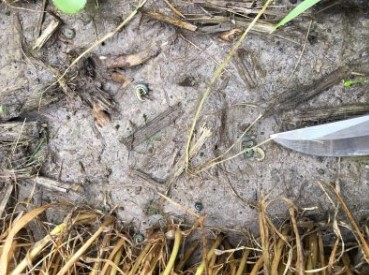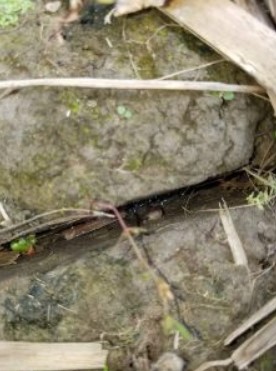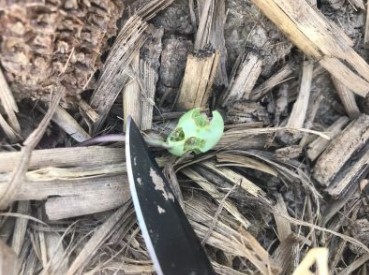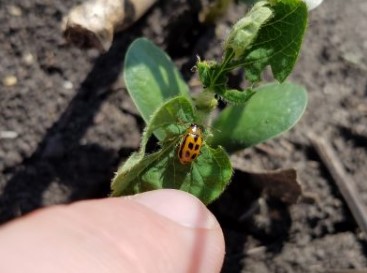Fig. 2. A true armyworm larvae. Note the light colored bands on the side, the net-like pattern on the head, and the dark bands on the prolegs. Photo: Frank Peairs, Colorado State University, Bugwood.org

Fig. 3. Several different developmental stages of true armyworm larvae in wheat. (Photo: Robert Bellm)
Slugs
Slugs are primarily an issue in no-till or conservation tillage fields which have a lot of residue and moisture. The wet conditions that favor slug damage can also lead to problems with seed slot closure, which exacerbates slug damage by allowing them to feed on the developing plant as the seed germinates. Unfortunately we do not have a good rescue treatment for slugs in soybean in Illinois. The best management strategy is to plant into a warm, dry seedbed (not always an option this season), and tillage is the best control we have available.

Fig. 4. A slug in a seed slot left open due to wet planting conditions. (Photo: Nick Seiter)

Fig. 5. Slug damage to a soybean cotyledon (Photo: Jennifer Woodyard, University of Illinois Extension)
Bean leaf beetle
Bean leaf beetle feeding is often noticed on soybean fields that are among the earliest planted in the state; when there are relatively few acres that have emerged, the highly mobile beetles are concentrated in those few fields. Usually this damage is mostly cosmetic, as soybeans are excellent at overcoming early defoliation. The economic threshold for defoliation of soybeans prior to bloom in Illinois is an average of 30% of leaf tissue removed with the defoliator still present in the field.

Fig. 6. A bean leaf beetle and its feeding damage on a young soybean plant (Photo: Nick Seiter)
Scouting is necessary to determine both the necessity and timing of an insecticide application for these insect pests. We want to avoid “revenge sprays” that occur after the insect has either progressed through its life cycle (in the case of the caterpillar pests) or moved along to another field (bean leaf beetles) and is no longer damaging the crop. As always, feel free to contact me if you are seeing anything unusual in the field related to insect management. Here is hoping for improved conditions as the season moves forward.
Source: illinois.edu